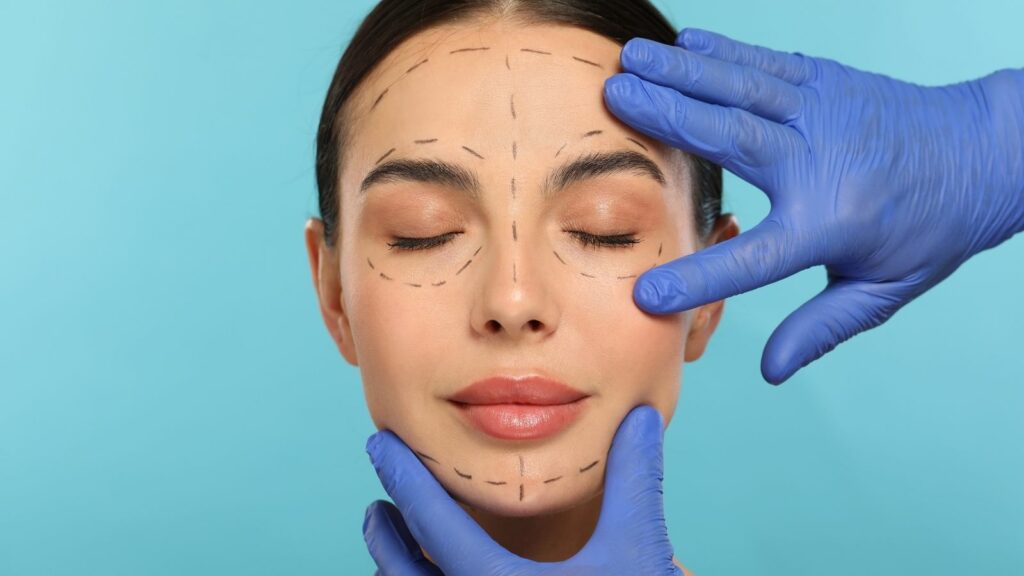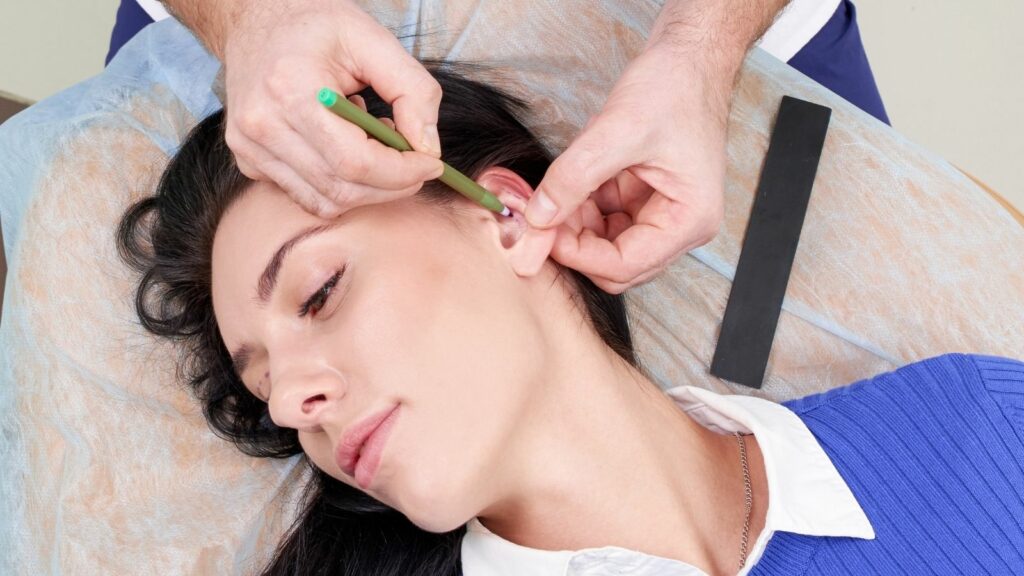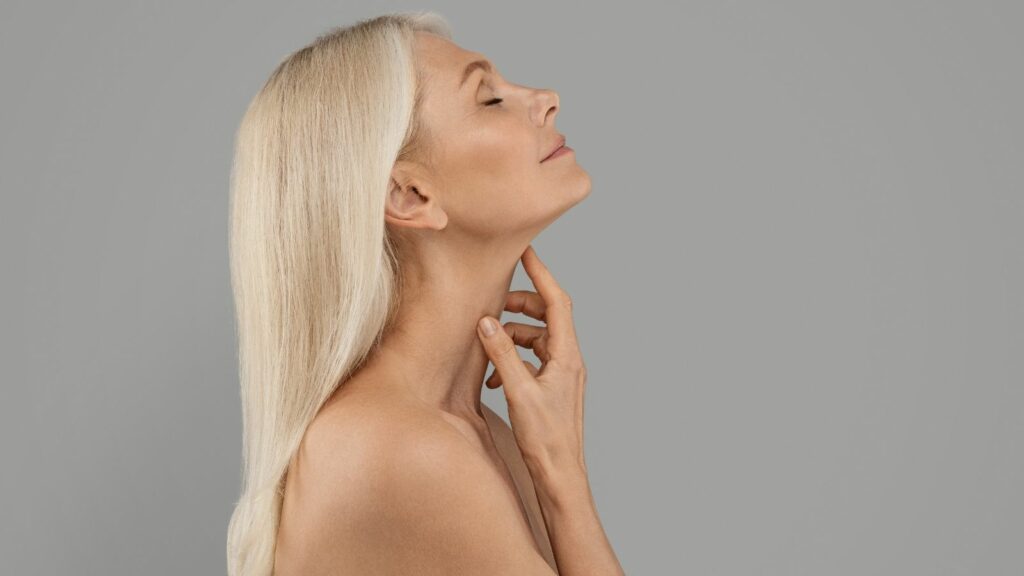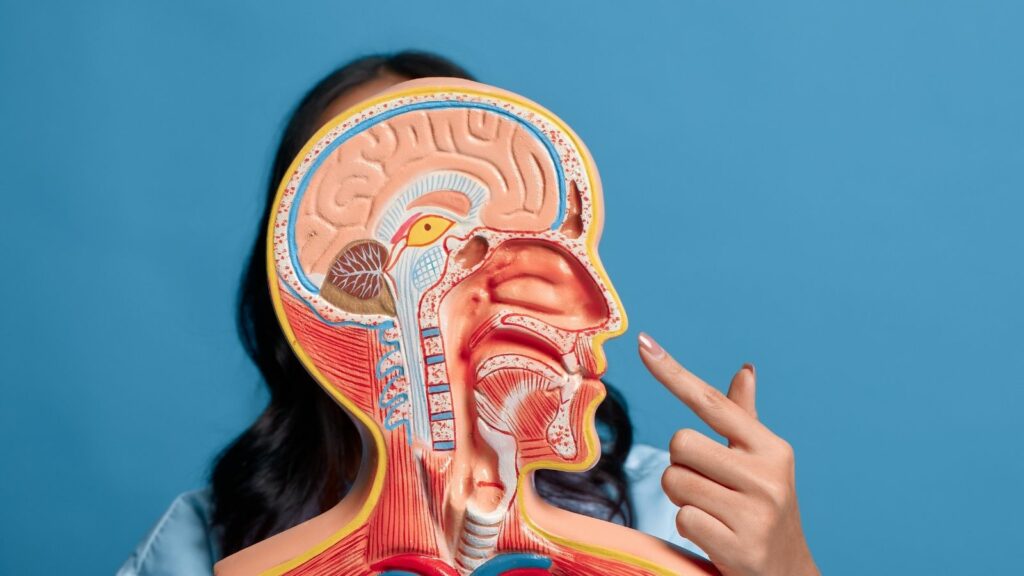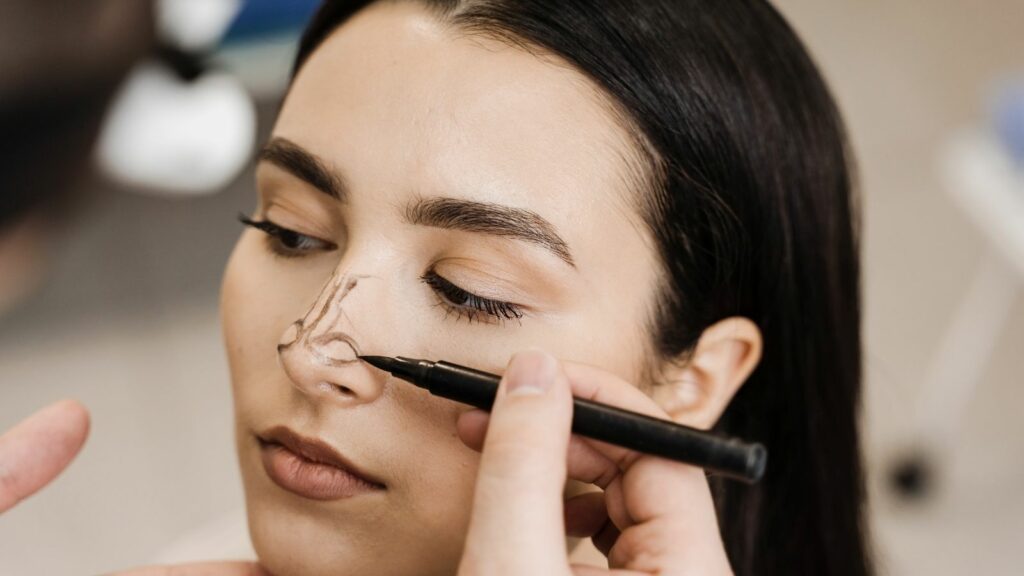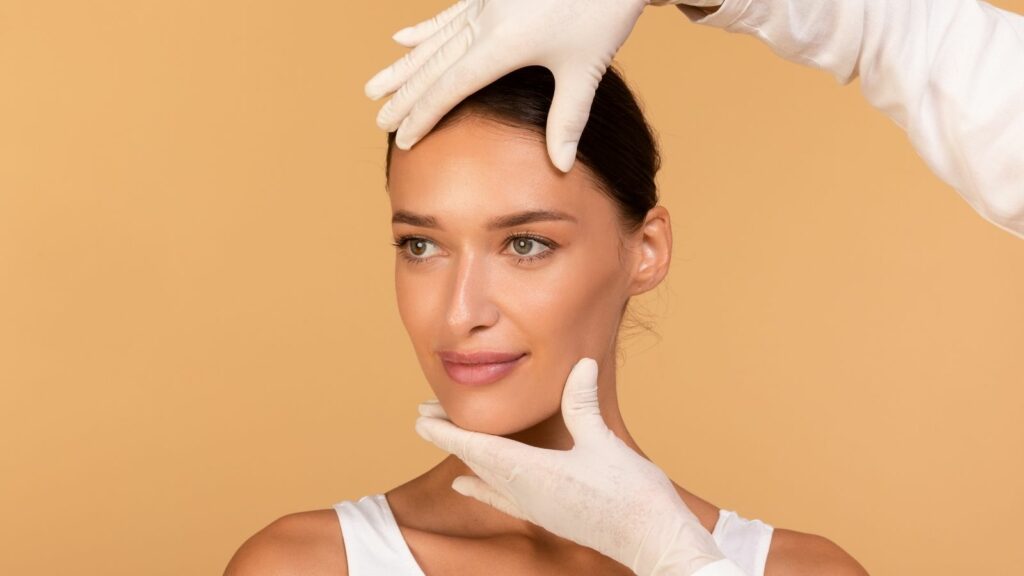Facial aesthetic harmony does not arise from a single flawless feature, but from the balance of all elements working together. Rhinoplasty and lip lift surgery are two key procedures that establish this harmony at the very center of the face. These two operations cannot be considered independently; even the slightest change made during rhinoplasty directly affects the length and angle of the upper lip. Approaching this region, known as the nasolabial complex, with a holistic perspective creates a deeper and more natural facial harmony that cannot be achieved with isolated procedures, and ensures long-lasting aesthetic results.
What Are the Goals of Modern Rhinoplasty Surgery?
In the past, rhinoplasty was generally associated with simply reducing the size of the nose. However, today’s modern rhinoplasty approach goes far beyond this old and one-dimensional perception. Rhinoplasty is now regarded as an art form that serves much more comprehensive and holistic goals. The primary aim is not only to address aesthetic concerns but also to maximize functional health.
The goals of modern rhinoplasty include:
- Achieving aesthetic harmony
- Improving breathing function
- Post-traumatic reconstruction
- Correction of congenital deformities
- Support during gender affirmation processes
At the core of this philosophy lies the principle of preserving anatomy. Instead of aggressively removing bone and cartilage as in the past, the goal is to reshape the existing anatomical structures with sculptor-like precision. Through suturing techniques, newly formed cartilage structures, and supportive grafts used when necessary to maintain structural integrity, the nose becomes both aesthetically pleasing and functionally stable for many years. This approach also preserves the delicate relationship between the nose and its neighbor, the upper lip, contributing to the overall facial harmony:
Why Is Facial Analysis Essential for a Successful Rhinoplasty?
The secret to a successful rhinoplasty lies not under the bright lights of the operating room, but in the detailed analysis performed in the calm atmosphere of the consultation room. This pre-operative evaluation is like mapping the face. It not only identifies visible issues on the surface but also reveals underlying anatomical causes. This allows us not just to “fix a problem” but to “create the ideal.” This critical analysis is usually performed from three different angles.
Frontal View: This angle is the fundamental starting point for understanding facial symmetry, proportions, and balance. By dividing the face into imaginary lines, we evaluate the position of the nose within the larger picture. From this perspective, the following features can be assessed:
- Overall facial symmetry
- Harmony between nasal width and interocular distance
- Asymmetries in the nasal bones
- Cartilage deviations in the mid-vault
- Deformities of the nasal tip
Basal View: This angle best reveals the secrets of the nasal tip. Features such as nostril shape, symmetry, and the width of the nasal base are most clearly visible from this perspective. The nasal tip can be compared to a three-legged tripod; even a small change to any of these legs affects both tip projection and rotation. This concept guides the creation of a refined and balanced nasal tip.
Profile View (Side View): Profile analysis most strikingly demonstrates the relationship between the nose and other facial features. It is perhaps the angle patients focus on most and where they expect to see change. Critical factors evaluated in the profile view include:
- Dorsal hump appearance
- The starting point and height of the radix
- A drooping or excessively upturned nasal tip
- Whether the nasal tip has adequate projection
Nasolabial Angle (NLA): This angle between the nasal tip and upper lip is the key aesthetic parameter that connects rhinoplasty and lip lift surgery. Any change in nasal tip position directly affects this angle and therefore the appearance of the lip.
What Are the Main Differences Between Open and Closed Rhinoplasty?
The choice of surgical approach during rhinoplasty depends on the existing nasal structure, the complexity of the issues to be corrected, and the surgeon’s experience. Both techniques have their own advantages and applications:
Open Rhinoplasty: In this technique, in addition to incisions made inside the nostrils, a small incision is made on the columella—the strip of skin between the nostrils.
Advantage: It allows the surgeon to directly visualize the nasal skeleton (bone and cartilage) and work with millimetric precision. This is considered the “gold standard” for complex tip surgeries, significant deviations, or revision cases after previously unsuccessful procedures.
Disadvantage: There is a small scar on the columella, which usually becomes nearly invisible over time, and swelling at the nasal tip may take slightly longer to resolve.
Closed Rhinoplasty: In this approach, all incisions are made inside the nostrils, leaving no visible external scar.
Advantage: No external scar and the potential for a slightly faster recovery.
Disadvantage: A more limited surgical field. Therefore, it is typically preferred for simpler cases that do not require major structural modification, such as correcting a small dorsal hump.
It should be noted that scientific studies show that success rates in both techniques are directly proportional to the surgeon’s experience. What truly matters is not the technique itself, but the surgeon’s ability to determine the right approach for the right patient and to master both techniques.
What Is the Aim of the Preservation Rhinoplasty Philosophy?
In recent years, an exciting philosophy has gained significant importance in the rhinoplasty world: Preservation Rhinoplasty. As the name suggests, this approach aims to achieve aesthetic goals by preserving and reshaping the natural structures of the nose rather than destroying them. Instead of the “break and rebuild” mentality, it embraces the philosophy of “bend, reshape, and reposition.” The main principles of this approach summarize the current evolution of modern rhinoplasty.
The primary goals of preservation rhinoplasty include:
- Preserving natural dorsal lines
- Avoiding an “operated” appearance
- Minimizing soft tissue trauma
- Providing a faster recovery
- Ensuring long-term functional outcomes
The most well-known application of this philosophy is dorsal preservation. In the traditional method, the hump was removed with a chisel, leaving an “open roof” that needed to be reconstructed. In the preservation technique, the dorsum is not touched directly. Instead, a portion of bone and cartilage is removed from beneath the hump—its foundation—allowing the entire nasal dorsum to descend as a single unit while maintaining its natural bridge.
This approach has particular significance in surgeries combined with lip lift procedures. The greatest theoretical concern in performing both surgeries simultaneously is the potential risk of reduced blood circulation in the tissue between the two incisions. Preservation rhinoplasty is less traumatic and better preserves vascular structures, thereby significantly reducing this risk. This demonstrates that the safety of combined surgery does not depend solely on which procedures are performed, but also on how they are performed.
Why Is a Lip Lift Necessary for a Face That Changes with Time?
Our face tells a story marked by time, and one of the most expressive narrators of this story is the upper lip. The youthful, lively, and attractive upper lip gradually transforms into a more tired and sometimes sad appearance over the years. Behind this change lie progressive alterations in the anatomy of the upper lip and surrounding structures. A lip lift targets these changes and seeks to turn back the clock.
The primary age-related changes seen in the upper lip include:
- Lengthening of the distance between the nasal base and the lip (philtrum)
- Thinning of the red part of the lip (vermilion) due to volume loss
- Inward rolling of the lip caused by excess skin
- Flattening of the “Cupid’s Bow”—the aesthetic upper lip curve
- Reduced visibility or loss of upper teeth when the lips are at rest
This is where the artistry of the lip lift comes into play. Through an incision hidden within the natural curves of the nasal base, a precisely measured amount of skin is removed. This simple but powerful maneuver shortens the elongated distance. As a result, the vermilion naturally rolls outward, the Cupid’s Bow becomes more defined, and—most importantly—the visibility of the upper teeth, a hallmark of youth, increases. Unlike temporary volumizing procedures such as fillers, a lip lift provides a permanent and structural rejuvenation.
Who Is an Ideal Candidate for a Lip Lift?
A lip lift can deliver highly satisfying results when performed on the right candidates. However, it is not suitable for everyone. When determining an ideal candidate, both anatomical features and patient expectations must be carefully evaluated.
An ideal lip lift candidate typically has:
- A structurally long or age-related elongated upper lip
- A thin and inward-rolled upper lip
- A desire for more visible upper teeth even at rest
- A wish for a more balanced proportion between the nose and the lip
- A preference for permanent solutions over temporary ones such as fillers
However, certain situations may make this surgery unsuitable. For example, performing a lip lift on a person who already has a short upper lip can create an unnatural “toothy” smile. Therefore, a careful facial analysis with millimetric measurements is essential before making a surgical decision.
What Are the Different Lip Lift Techniques Applied for Various Aesthetic Goals?
Every face has a unique anatomy, and every patient has personal aesthetic desires. For this reason, there is no “one type” of lip lift. The surgeon selects the technique that best suits the patient’s needs. Each technique has its own incision design and aesthetic goal:
The most commonly performed lip lift techniques include:
- Subnasal “Bullhorn” Lip Lift: The incision is placed within the natural curve of the nasal base, extending from one nostril to the other. It provides strong central lifting and definition. It is the most popular technique.
- Direct “Gullwing” Lip Lift: The incision is made directly above the vermilion border. While it produces a sharply defined lip shape, it is less preferred due to the more visible scar.
- Corner Lip Lift (“Smile Lift”): Designed to correct a downturned mouth that gives a sad expression. A small piece of skin is removed above the corners of the lips to elevate them.
- Italian Lip Lift: A more minimal version of the Bullhorn technique. Two small, separate incisions are made just beneath each nostril. It does not leave a scar in the midline but offers a subtler lift.
The selected technique directly affects whether the lip lift can be performed in the same session as rhinoplasty. For instance, corner lip lift, whose incisions are far from the nasal base, carries almost no risk when combined with rhinoplasty. However, the Bullhorn technique, whose incision is adjacent to rhinoplasty incisions, presents the highest potential risk. This highlights how delicate the planning of combined procedures must be.
How Do Rhinoplasty and Lip Lift Together Affect Facial Harmony?
The nose and lips are two neighboring structures that form the aesthetic center of the face. A change in one inevitably affects the appearance of the other. This inseparable relationship forms the foundation of a combined surgical approach. Rhinoplasty is not only a procedure that reshapes the nose; it also repositions the soft tissues of the midface.
The most classic example of this interaction is lifting a droopy nasal tip. When the nasal tip is rotated upward (cephalic rotation), the nasolabial angle widens. This creates an optical illusion, making the upper lip appear longer.
Now imagine a scenario: A patient has both a droopy nasal tip and a naturally long upper lip. If only rhinoplasty is performed, even if the nasal tip is positioned perfectly, the lip may appear even longer, creating a new imbalance. At this point, a simultaneous lip lift is no longer just an “additional” procedure—it becomes the key to maintaining harmony. Combined surgery enables the surgeon to optimize the nasolabial angle and balance the lip length, ensuring a harmonious “dance” between the rejuvenated nose and the refreshed upper lip.
How Does Upper Lip Length Change After Rhinoplasty?
The relationship between nasal tip position and upper lip length is not just an aesthetic observation or assumption; it is a scientifically proven, measurable reality. Clinical studies using modern 3D imaging technologies clearly demonstrate this relationship.
Research shows that when the nasal tip is rotated upward during rhinoplasty, each degree of increase in the nasolabial angle lengthens the visible upper lip by approximately 0.05 mm.
This effect also varies depending on the surgical technique used to support the nasal tip. For example, a strong septal extension graft placed in the mid-vault stabilizes the nasal tip more effectively, making this lip-lengthening effect more predictable and pronounced.
This millimetric information is invaluable during surgical planning. If a surgeon aims to rotate the nasal tip by 10 degrees, they can anticipate approximately 0.5 mm of upper lip lengthening. Although this may seem like a tiny number, millimeters make a significant difference in facial aesthetics. This foresight enables surgeons to identify patients for whom this effect may be undesirable and to openly discuss the potential need for a simultaneous lip lift.
Can Rhinoplasty and Lip Lift Surgery Be Performed in the Same Session?
This is one of the most important and frequently debated questions in facial plastic surgery. There is no single correct answer. The decision must be made through a personalized risk-benefit analysis, considering the surgeon’s experience and the techniques used. Both approaches have strong arguments:
Advantages of Performing Both Procedures in the Same Session:
- Aesthetic Unity: Performing both procedures together allows the surgeon to shape the nose and lips in complete harmony in real time.
- Single Recovery Period: This is the greatest comfort for the patient—one period of swelling, bruising, and downtime instead of two separate recovery periods.
- Cost Advantage: A single anesthesia and a single hospital fee reduce overall costs.
- Faster Results: The patient achieves their final desired look much sooner, which is psychologically comforting.
Reasons for Performing the Procedures Separately (Safety Principle):
- Blood Supply Risk: The main concern is the potential risk of compromising blood flow in the small strip of tissue between the open rhinoplasty incision and the lip lift incision.
- Risk of Tissue Loss: Although extremely rare, impaired blood flow can lead to tissue necrosis. Because this would occur in the center of the face and be difficult to repair, some surgeons prefer to avoid this risk.
- Letting the Nose Settle First: Some experts argue that performing rhinoplasty first and allowing the nose to stabilize (usually after 2–3 months) provides a more controlled basis for planning a subsequent lip lift.
In conclusion, modern surgical techniques (especially Preservation Rhinoplasty) and proper patient selection have greatly increased the safety of combined procedures. However, the decision must always prioritize the individual patient’s safety and needs.
What Factors Influence the Decision for Combined Rhinoplasty and Lip Lift?
The answer to “together or separate?” results from a complex equation in which multiple factors are carefully weighed. Both patient-related considerations and surgical details influence this critical decision.
Key factors include:
- Patient’s General Health: Smoking is the most important risk factor because it negatively affects blood circulation.
- Planned Rhinoplasty Technique: Less traumatic approaches like Preservation Rhinoplasty provide a safer basis for combined surgery.
- Whether It Is a Revision Case: Previously operated noses may have compromised blood supply, increasing risk.
- Need for Alar Base Reduction: If alar base narrowing is required, incision overlap increases risk, and separate sessions are generally preferred. This is one of the most critical factors.
- Planned Lip Lift Technique: Techniques with incisions farther from the nasal base (e.g., Corner Lip Lift) carry lower risk.
- Skin Quality: The patient’s skin structure and healing capacity are important considerations.
- Surgeon’s Experience: The safety and success of combined procedures are directly related to the surgeon’s expertise.
What Are the Outcomes and Satisfaction Rates After Combined Rhinoplasty and Lip Lift?
Scientific studies and clinical experience show that when properly planned and performed, combined rhinoplasty and lip lift surgeries yield highly satisfying results for both patients and surgeons. These outcomes must be evaluated not only aesthetically but also functionally and psychologically.
Findings and satisfaction rates generally fall under three categories:
- Aesthetic Results: Noticeable harmony and rejuvenation are achieved in the midface. Objective parameters such as the nasolabial angle and lip-nose ratio show statistically significant improvements.
- Functional Results: Since obstructive nasal issues are addressed during rhinoplasty, the majority of patients experience improved breathing and enhanced quality of life.
- Patient Satisfaction: Research consistently shows exceptionally high satisfaction rates—typically above 95%. This confirms that both aesthetic and functional expectations are largely met.
What Are the Possible Risks of Combined Rhinoplasty and Lip Lift?
As with any surgical procedure, this combined approach carries potential risks and complications. Discussing all possibilities clearly during the pre-operative consultation is an essential part of informed consent. Current evidence indicates that these risks are very low when proper patient selection and meticulous surgical techniques are applied.
Risks may be categorized by frequency and severity:
Common and Usually Temporary:
- Post-operative swelling
- Bruising
- Temporary numbness of the nasal tip and upper lip
- Mild oozing-type bleeding
Less Common Complications:
- Infection
- More noticeable or raised scarring (hypertrophic scar)
- Minor wound opening
- Asymmetry
- Extremely Rare but Serious Complication:
Tissue Loss (Skin Necrosis): As previously mentioned, this is the most feared yet extremely rare complication. This risk is minimized by avoiding combined procedures in smokers, patients with vascular disease, or those requiring alar base reduction, and by using modern, tissue-preserving surgical techniques.





